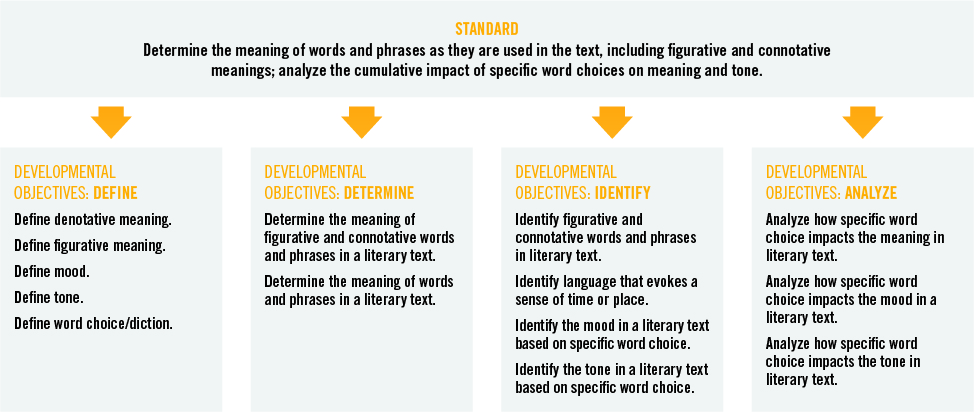
One of the most crucial mistakes an educator can make is to assume students already have the needed background to learn what is next. The way to ensure this doesn’t happen is to provide scaffolded instruction to the students.
Many consider a quick reminder of past material adequate for scaffolding, but that is not at all the case. Scaffolding is not just mentioning to students what they need to know to successfully move on.
In education, scaffolding refers to a variety of instructional techniques used to move students progressively toward stronger understanding and, ultimately, greater independence in the learning process.
Breaking Down the Standards
In order to properly scaffold, the first step needs to be to dissect the standard that is ultimately being taught and to verify that students have learned each component needed to build up to the preferred final outcome. Modern standards are often quite bloated, which means there is a need to do some investigation to discern exactly what steps are being asked of both the student and teacher.
Here’s a modern English Language Arts standard: “Determine the meaning of words and phrases as they are used in the text, including figurative and connotative meanings; analyze the cumulative impact of specific word choices on meaning and tone (e.g., how the language evokes a sense of time and place; how it sets a formal or informal tone).”
So, what do students need to know in order to master that standard? After examining the standard, one can determine there are more than a dozen separate concepts or development objectives (DOs) students need to accomplish in order to successfully master the standard as a whole.

Breakdown of an English standard illustrating the numerous concepts a student needs to master.
To begin, they need to know the definitions of several key terms such as connotation and mood, but more importantly, they need to be able to identify them in a literary work before they can make determinations about them. So, scaffolding could be done here by not only defining the terms, but also by guiding students to identify them prior to teaching the skill of analysis. Students would be far more likely to ease into an analysis once they are confident in meanings and able to identify them.
Learn how StrongMind incorporates scaffolding into its curriculum in our interactive white paper about backward design.
The Importance of Covering Prerequisites
It may be obvious why it’s necessary to teach prerequisite information if the student never learned it in the first place, but what about the students who did master the foundational information needed? Is that a waste of their time? Not at all. Even if a student has previously mastered prerequisite knowledge, there is great value provided during scaffolding.
Why? Reminding someone of information they’ve already learned makes it substantially easier for them to transfer the new material to long-term memory. Activating prior knowledge and connecting it to the new learning is key to storing information in long-term memory. So, scaffolding allows for one of two things. One, it can ensure students have the information necessary to learn the content that is about to be presented. Two, it activates what the student have already learned and helps them remember it.
Whether instruction needs to be remediated or activated, the practice of scaffolding is one that all instructional material should provide.
At StrongMind, we break down the large standards to identify what is at the core of the expected outcome, and then examine them to ensure there is adequate information delivered to the student to ensure success in those outcomes.
The advanced assessments in our courses allow us to test the students on their mastery of those preliminary skills. Students can report back to the teacher in real time so he or she can intervene when needed before the student encounters the next step in learning. Once the student has a strong foundation in the content leading up to the standard’s ultimate outcome, they can successfully move on in the progression of learning.
Whether we’re helping develop physical buildings or knowledgeable minds, well-planned scaffolding supports strong and enduring structures—and in our case, independent and effective lifelong learners.
To see how StrongMind curriculum can drive student growth at your school, request a personalized demo.
By Gail Norlie
 Gail has nearly two decades of experience in education with a background in both designing and managing online coursework. She works collaboratively with a team of instructional designers, content developers, media specialists and editors to ensure the highest level of quality in all areas of curriculum development.
Gail has nearly two decades of experience in education with a background in both designing and managing online coursework. She works collaboratively with a team of instructional designers, content developers, media specialists and editors to ensure the highest level of quality in all areas of curriculum development.





